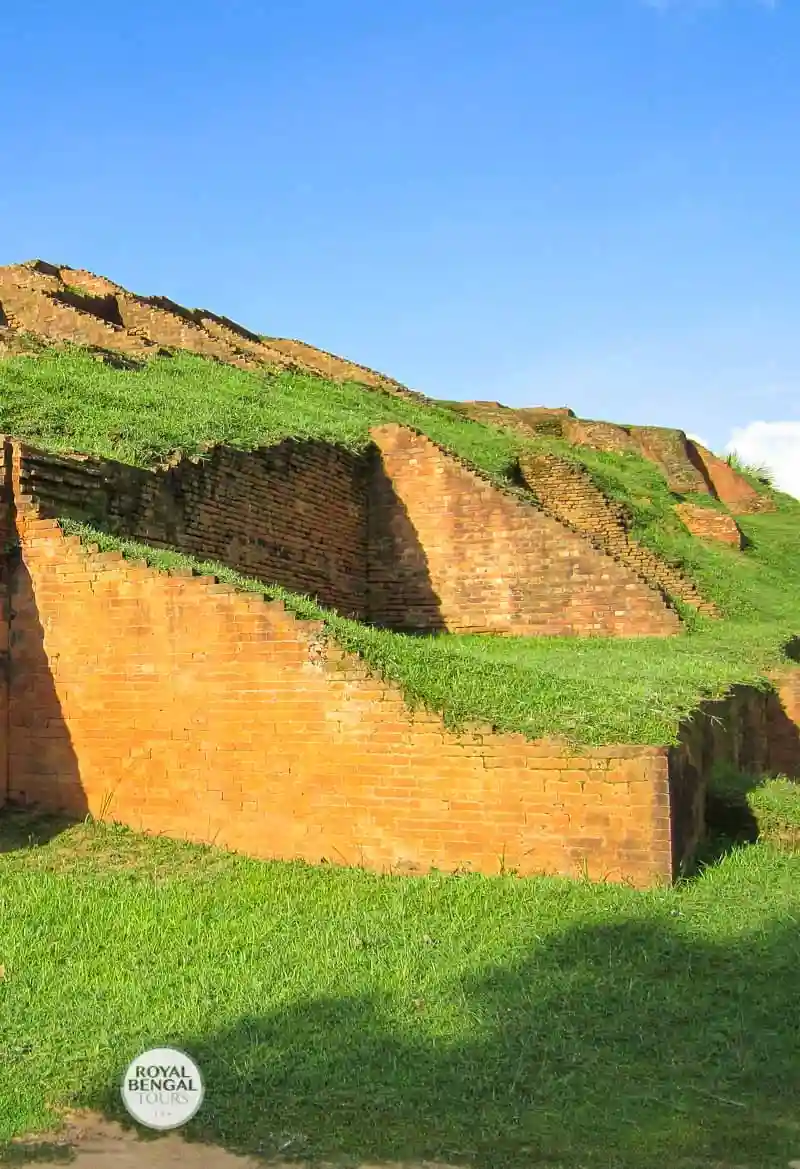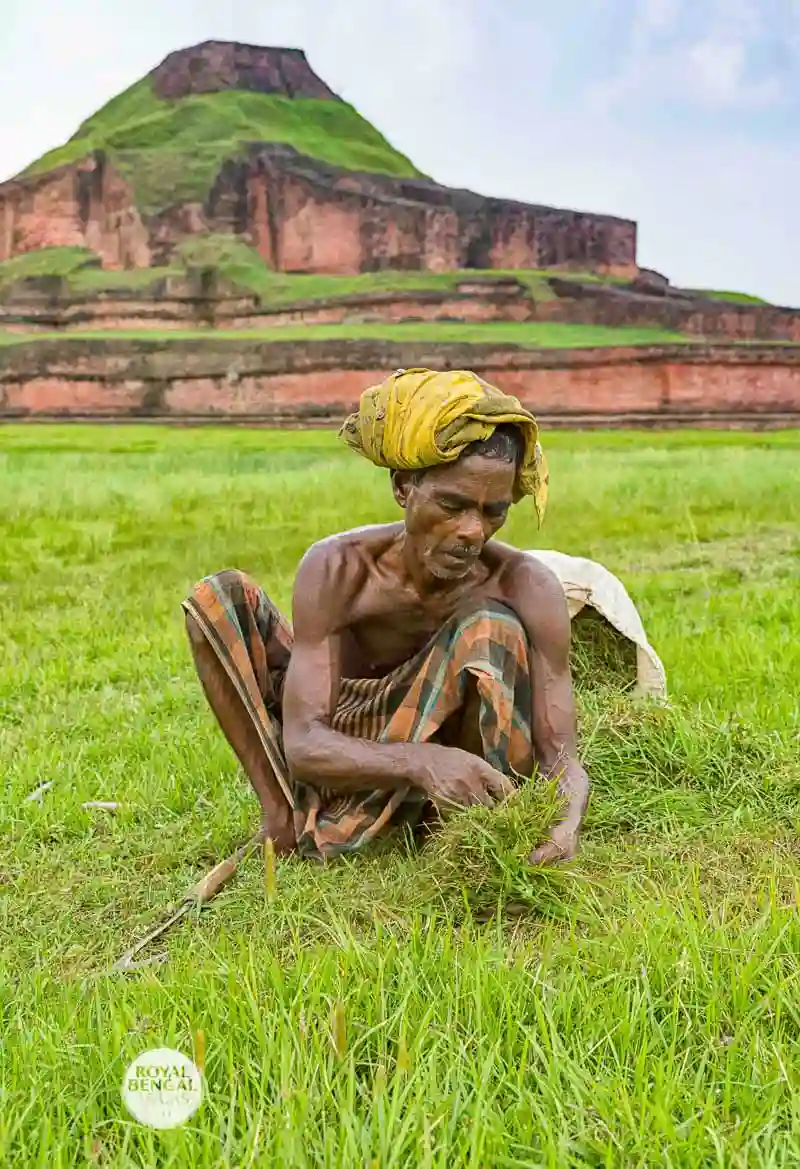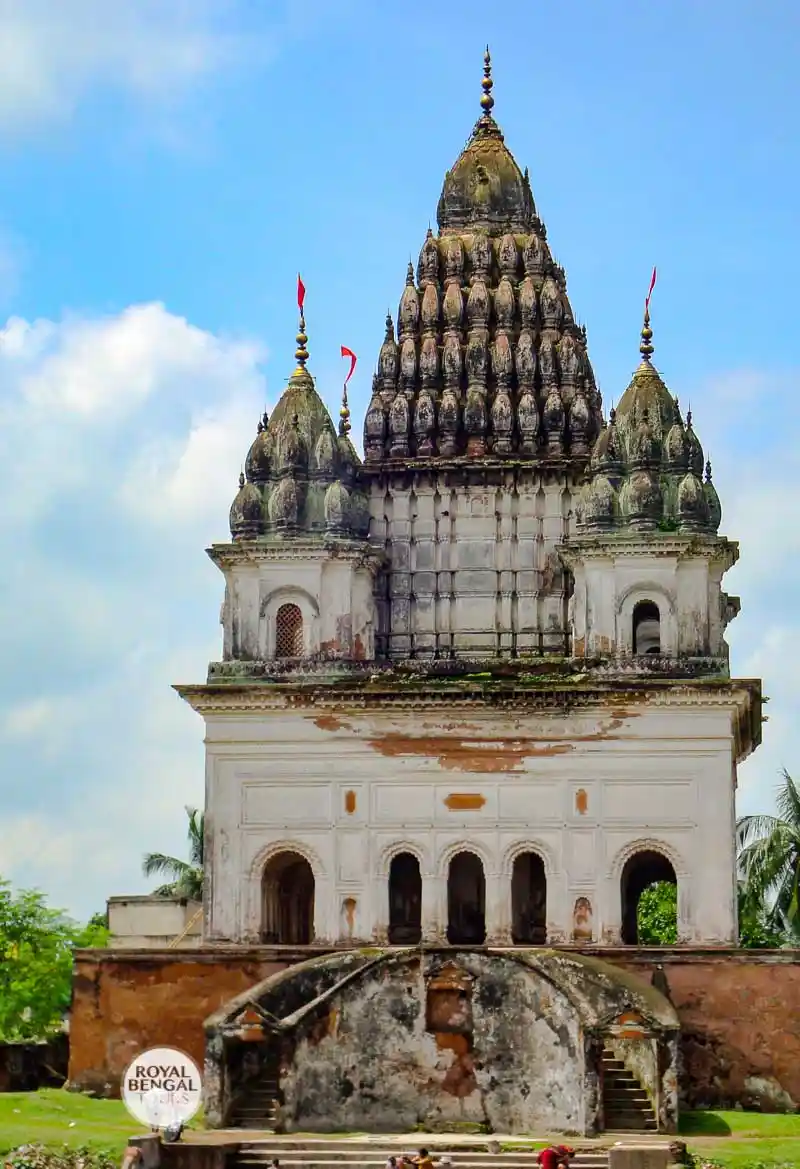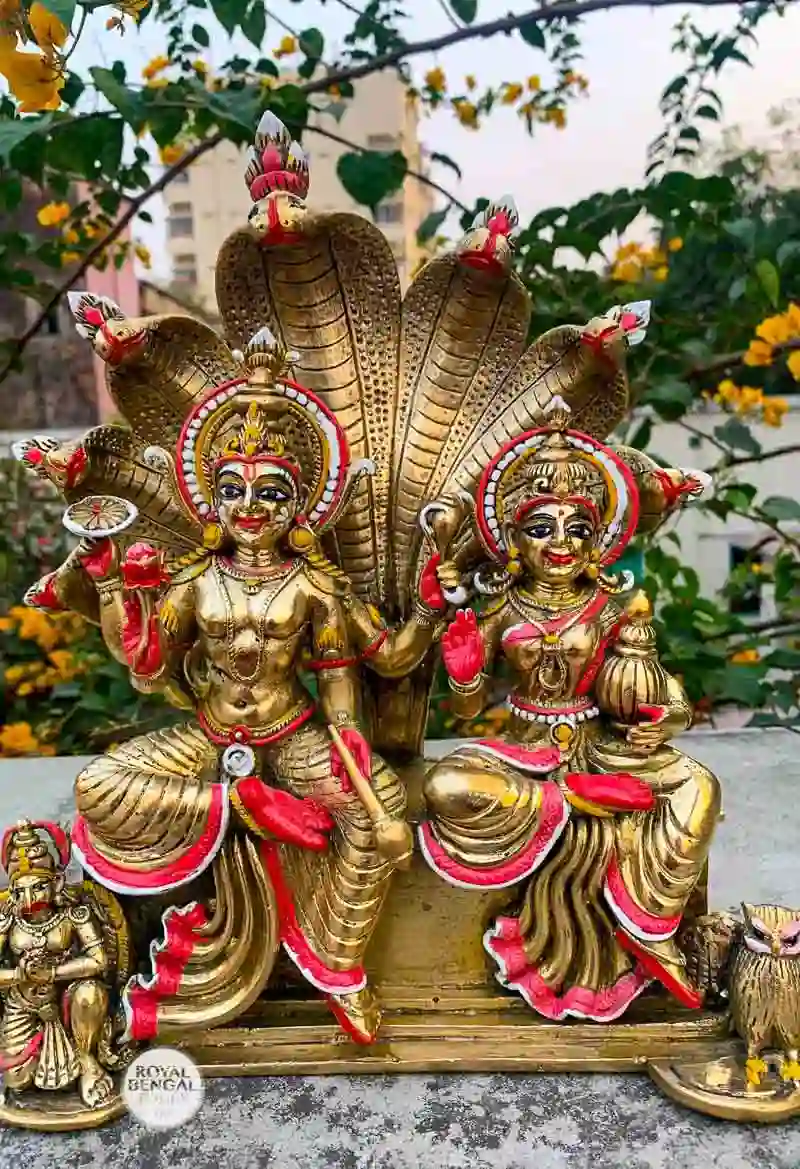[vc_row][vc_column][mkdf_section_title title_tag="" disable_break_words="no" subtitle_tag="" text_font_weight="" title_text_transform="" title_text_align="" title_size="medium" title="Artisans of Dhamrai Metal Crafting village" margin_bottom="4" text="Brass and pottery artisans of Dhamrai Metal Crafting village are extremely skillful and dedicated to their passion. Brass metal crafting and pottery village are only about 40 km outside of Dhaka. Let's explore the mysteries behind Bangladesh's unique metal casting industry. Bangladesh is an amazing land filled with patterns of fascinating cultures, super friendly people, exciting scenery, and a centuries-old history of metal artistry. Bangladeshi artisans have been making beautiful metal objects for generations, using a variety of different methods." subtitle="Life and Work of Bangladeshi Artisans"][vc_empty_space height="12"][mkdf_image_gallery type="grid" enable_image_shadow="yes" image_behavior="zoom" number_of_columns="two" space_between_items="small" column_number="2" spacing="small" hover_click_action="pretty_photo" grayscale="no" images="16414,16415" image_size="477x322"][vc_empty_space height="12"][vc_column_text]Brass and metal casting techniques in this country specifically include.
- The Lost-wax method
- The clay casting method
- The sand-casting method
- The spoon-casting method
- And the plate casting method
All these methods are in practice for making items ranging from ornate Hindu and Buddhist statues to simple household utensil items such as spoons and toilet pots.
Over the last four-five decades, many artisan families have left Bangladesh or have changed professions. With hard competition from cheaper items coming from India and other neighbouring countries in the region, families that had once passed on these skills to their descendants are now switching to other, less intensive forms of work. Thus, the tradition of hand-casted metal objects is gradually fading away.
We hope that future generations of Bangladesh will someday come to appreciate the time and effort into making these unique objects. If this trade is someday lost, an important part of Bangladesh's artistic tradition will be gone forever.[/vc_column_text][vc_empty_space height="45px"][/vc_column][/vc_row][vc_row css=".vc_custom_1461323207497{padding-bottom: 60px !important;}"][vc_column][mkdf_section_title title_tag="" disable_break_words="no" subtitle_tag="" text_font_weight="" title="Bangladesh Overview" subtitle="life, culture, geography and history" text="Located at the southern curve of the Bay of Bengal, Bangladesh is surrounded by India to the west, northwest and east, and Myanmar to the southeast. Nowadays Bangladesh is standing as one of the most densely populated countries in the world, with a population of nearly 180 million people living within 147570 km² land area."][vc_column_text]Two primary features characterize much of the country's topography - the endless flat landscape that seldom rises more than a few meters altitude and an extensive network of large and small -rivers that dominate most of the country and - are of primary importance to the socio-economic life of this nation. Up to half of the land goes underwater during the monsoon for about to four months. The climate of Bangladesh is tropical and subtropical. Three primary seasons out of six are feelable throughout the year: 'Rainy Season' or the monsoon (June to September); the 'Winter Season' that extends from (October to February) and the 'Summer or hot Season' (March to May).
Undivided Bengals (Bangladesh and the West Bengal State of India) was considered as one of the wealthiest parts of the subcontinent until the 16th century.
Over the early periods, Bangladesh featured a series of Indian imperialism, internal combats, and struggles between Buddhism, Hinduism and Islam for dominance. A Strong Islamic weave washed over much of Northern India and Bangladesh by the end of the 12th century. During the Mogul rulers, Bengal was opened up to the world, literature and art flourished, overland trade expanded. Subsequently, the European powers, including the Portuguese, French and British, began to establish themselves in this region.
Within a span of fifty years, Bangladesh had flown the flags of three different nations - Indian (under British rule), East Pakistan and now Bangladesh. This young country Bangladesh had achieved freedom in 1971, through a nine-month liberation war with West Pakistan at a high price of 3 million martyr’s life.
During all of these changes and struggles, Bengal has always had a rich cultural heritage built upon a ground of ancient animist, Buddhist, Hindu, and Muslim roots. The metalwork, stone carving, weaving, pottery making and terracotta sculpturing have been revealed and refined throughout its history. There was a time when the metal casting industry in Bangladesh flourished. Unfortunately, this trend has significantly decreased over the past few decades.[/vc_column_text][vc_empty_space height="20px"][mkdf_section_title title_tag="" disable_break_words="no" subtitle_tag="" text_font_weight="" title="Bangladesh knows the world but maybe the world doesn't know Bangladesh" subtitle="Current Images and the reality is different" text="When any foreigner thinks of Bangladesh, they often recall images that they have seen of overcrowded urban slums, excessive poverty, and devastating natural disasters. Most of the international media reports seem to always focus on these particular negative aspects as if they represent the only thing that Bangladesh is all about. Without looking closely at its true beauty, does an injustice to this emerging nation that has so much more to offer. Bangladesh is a country that is lush, picturesque, filled with people who are proud, resourceful and passionate."][vc_column_text]Duis dolor est, tincidunt vel enim sit amet, venenatis euismod neque. Duis eleifend ligula id tortor finibus faucibus. Donec et quam pulvinar, blandit tortor a, sollicitudin mauris. Donec orci enim, bibendum a augue quis, aliquet cursus quam. Pellentesque pulvinar, elit at condimentum dictum, sapien nibh auctor tortor, vel vulputate sapien tortor et velit. Sed nulla nisi, congue eu quam vel, molestie gravida.[/vc_column_text][/vc_column][/vc_row][vc_row][vc_column][mkdf_section_title title_tag="" disable_break_words="no" subtitle_tag="" text_font_weight="" title_text_transform="" title_text_align="" title_size="medium" title="Bangladesh's Metal Casting Center" margin_bottom="0" text="'Dhamrai' a small village at the outskirt of Dhaka city; is the main centre for metal casting industry in Bangladesh. This predominately Hindu village has been producing hand-made - metalware for many generations. Produced items are mainly for Bangladesh markets, and recently these items are attracting some international markets. On top of the metal casting objects, Dhamrai was once a famous place for making muslin saree (fine weaving cloth), jamdani saree and pottery items. A hard competition with modern technology is running over the ancient industries of this area, unfortunately." subtitle="Dhamrai"][vc_empty_space height="10px"][vc_column_text]Dhamrai is about 39 kilometres northwest of the capital city Dhaka, lies along the banks of the Bangshi and Kakilajani rivers. The rich history of Dhamrai can be traced back to the Pala Dynasty (800 - 1100 AD), during which period both early Buddhist and Hindu settlements flourished. Still, many Buddhist, Hindu and Islamic edifices can be found around Dhamrai that date back many hundreds of years. Inhabitants from different religions are living together at peace all over Dhamrai as well as in Bangladesh.
Dhamrai is also quite well known for Hindu festivals that are held throughout the year. Rathmela festival is one of the main among many. During the late June or early July (according to religious calendar) thousands of Hindu devotees from all over Bangladesh and India come here to celebrate Rathmela or Chariot festival. Hindu devotees carefully remove a set of goddesses from 400 years old Jashomadhav Temple and place them onto a large wooden Rath (chariot). Believers then pull the Rath to different temples throughout the area. Special pujas (worships) are performed at each stopping point. The Rath (chariot) and the deities return to their place of origin after nine days. The Pakistani Military had burned the 60-feet high Rath during the liberation war in 1971. Hindu devotees this area goes to the cremation grounds and dance throughout the night on the last night of the Bengali year (second week of April, mostly on 13th April). The Kali deity leads the group with a skull head and knife. The Durga, Kali, Saraswathi, Dewali, and Jonmasthumi pujas are also important and performed throughout this area.[/vc_column_text][vc_empty_space height="20px"][mkdf_section_title title_tag="" disable_break_words="no" text_font_weight="" title="The Craftsmen" text="Since few centuries, several types of casting techniques are in use for creating metal objects in different areas of Bangladesh. Nowadays, most of the Bangladeshi metal casting artisans are following these techniques:"][vc_column_text]
- The Lost-wax method
- The clay casting method
- The sand casting method
- The spoon casting method
- The plate casting method.
The lost wax method in one of the prominent for its profound creativity and individual reputation, a particular sub-group of Hindus tend to dominate this trade. The artisans of this trade are from the "potter" cast and share the last name of Pal. The same group of craftsmen can be found in other casting approaches that use clay as the basis for the moulds. Another Hindu subgroup that usually works as carpenters and shares the last name of Sutradha, also involved in the metal casting industry. A mixture of both Hindu and Muslim expertise are involved and practising the sand casting, spoon-making and plate-making techniques around Dhamrai area. Regardless of religion, it can also be that the entire villages specialize in a particular casting method.
Bangladeshi metal casting industry has been more of a family enterprise, with every member being given a specific job and responsibility. Nowadays, the artisan often comes from different families of different locations and are most of the time paid a daily wage or a monthly salary. Workshop owner manages the process of acquiring the raw materials and developing the marketplaces. These managers receive orders and sale their wares to retailers or wholesalers throughout Bangladesh.
An elegant metal object may look very easy on the hand of an expert artisan, but much of what they do has hidden elements based on extensive experience. One must spend years to earn such perfecting skills. Anyone interested in learning these techniques must be an apprentice for several years before they are able to master much of the casting work on their own.
Over the last fifty years, many Bangladeshi artisan families have fled to India or switched profession to other trade. India is offering an easy citizenship policy for Bangladeshi Hindus. Therefore, many Bangladeshi artisans went to India to find a better life by practising their skills. On the other hand, the inventions of modern technology have narrow down the future of this precious metal industry, with hard competition from inexpensive aluminium and plastic products coming in from China and India in the region. As a result, the tradition of hand casted metal objects may soon be in danger. There are only five/ six persons left in Bangladesh who are capable of making "masterpiece-quality" Hindu and Buddhist figures. Most of them are located in the Dhamrai area.
If a viable market does not continue for these products, such heritage will disappear into oblivion.[/vc_column_text][vc_empty_space height="20px"][mkdf_section_title title_tag="" disable_break_words="no" text_font_weight="" title="Metal Used in the Casting Process" text="As a general rule, a variety of different metal combinations are used for metal casting in Bangladesh; two primary alloys are most often found - brass or bronze. Brass or Pittal has a yellowish colour and a combination of 60 percent copper and 40 percent zinc. Artisans prefer brass for most of the castings in Bangladesh. Because it is a soft metal than bronze and easier to work with during the finishing stages of an object to bring out the exact finer details."][vc_column_text]Bronze or kasha has silverish in colour, which consists of 70 percent copper and 30 percent tin. Bronze is a harder alloy and easier to work during the casting process because of melting and cools.
Bronze is a quite complicated element to work at the final stage to bring out the details of a particular object. Bronze products are more expensive because the cost of tin is higher than zinc. Copper is relatively cheaper. Since tin and zinc are not readily available in Bangladeshi markets, they are mostly imported from China, Australia or Germany.
Only a few craftsmen nowadays use raw copper, zinc or tin for casting objects. Discarded brass and bronze metal objects are available in the local market; these metal pieces are combined, melted down and re-casted. The colour of casted objects in Bangladesh often varies depending upon the quality of the raw materials used.
Their original colour naturally fades and turns to a darker shade when the object gets older. The combination of the metal, cleaning process, frequency of cleaning, and the element of time can influence this change. If this process happens naturally, the resulting colour variation cannot be removed easily without excessive cleaning. Darker the shade, more expensive the object gets.
Not necessarily all brass and bronze items that have a darker colour or shade are old. Some craftsmen use various oxidizing techniques regularly to darken the colour or to bring an antique look. It is not that difficult to find out a copy product, the edges of new products would be sharp while you try to feel the objects and the old one would have very smooth features because of time, from wear from regular handling.
Old ones are worthy expensive.[/vc_column_text][vc_empty_space height="20px"][mkdf_section_title title_tag="" disable_break_words="no" text_font_weight="" title="Right Oven for Melting Process" text="An especially custom-made cylindrical shape oven is used in Dhamrai to melt the metals for casting. The size of an oven can be up to four feet tall and five feet across maximum. Walls are made of Bricks and sometimes reinforced with iron rods, and the top is open. A thick layer of special, durable mud covers both sides of the eight inches thick walls."][vc_column_text]In order to fire-up the oven, about one to two inches thick layer of charcoals are placed to cover the bottom. After adding some red-hot coals on the coal layer, then they supply air through the front vent. Soon the fire spread through the whole charcoal layer and then a four to six inches thick coke layer is added to the oven. Nowadays, some of the factory owners use furnace oil instead of coke. The crucibles are carefully placed over the coals and the moulds over the crucibles. The moulds have to be red hot to avoid cracking during the casting process. Therefore the crucibles and moulds are heated at the same time and the same temperature. The fan keeps the air force through the bottom hole; thick and yellowish smoke comes for the first fifteen-twenty minutes. The smoke subsides after the temperature reaches a certain level. A lid is then placed on top of the oven to keep the heat inside. It takes about three hours to melt the metals in the crucibles. When the flame looks yellowish, then they start removing the mould or crucibles to begin the casting process.
Every year, about a month before the Durga Puja festival, the Hindu communities of Dhamrai area celebrate a ceremony to worship the ovens and the tools they use in the casting process. People also make an offering to the God of Artisan (Bisha Korma) to ensure that the casted item comes out of the oven without any defects.[/vc_column_text][vc_empty_space height="20px"][mkdf_section_title title_tag="" disable_break_words="no" text_font_weight="" title="The Unique Lost Wax Method" text="The ``Lost Wax Method`` is an essential technique used in Bangladesh to cast Hindu, Buddhist statues and various decorative antic style household and innovative items. This unique method is divided into four stages, namely (1) wax model creation; (2) forming the mould; (3) casting the mould; and ( 4) finishing the object. This technique can be employed to cast any number of desired items, ranging from statues to household goods such as bowls, pitchers and ceremonial lamps."][vc_column_text]
The Wax Model Creation
A mixture of 40 percent bees' wax and 60 percent paraffin solution is used to make wax models. Paraffin is a white, water-soluble material obtained from crude petroleum. This material is also the main element in regular candle wax, costs approximately US$1 per kilogram (Kg). The bee's wax is locally harvested throughout Bangladesh, costs around US$3-4 per kg. Bangladeshi artisan prefers bees' wax and paraffin solution for several reasons: paraffin is cheaper than bees' wax; paraffin allows wax models to shape easy and smoothly, and this combination is less sticky to work with.





